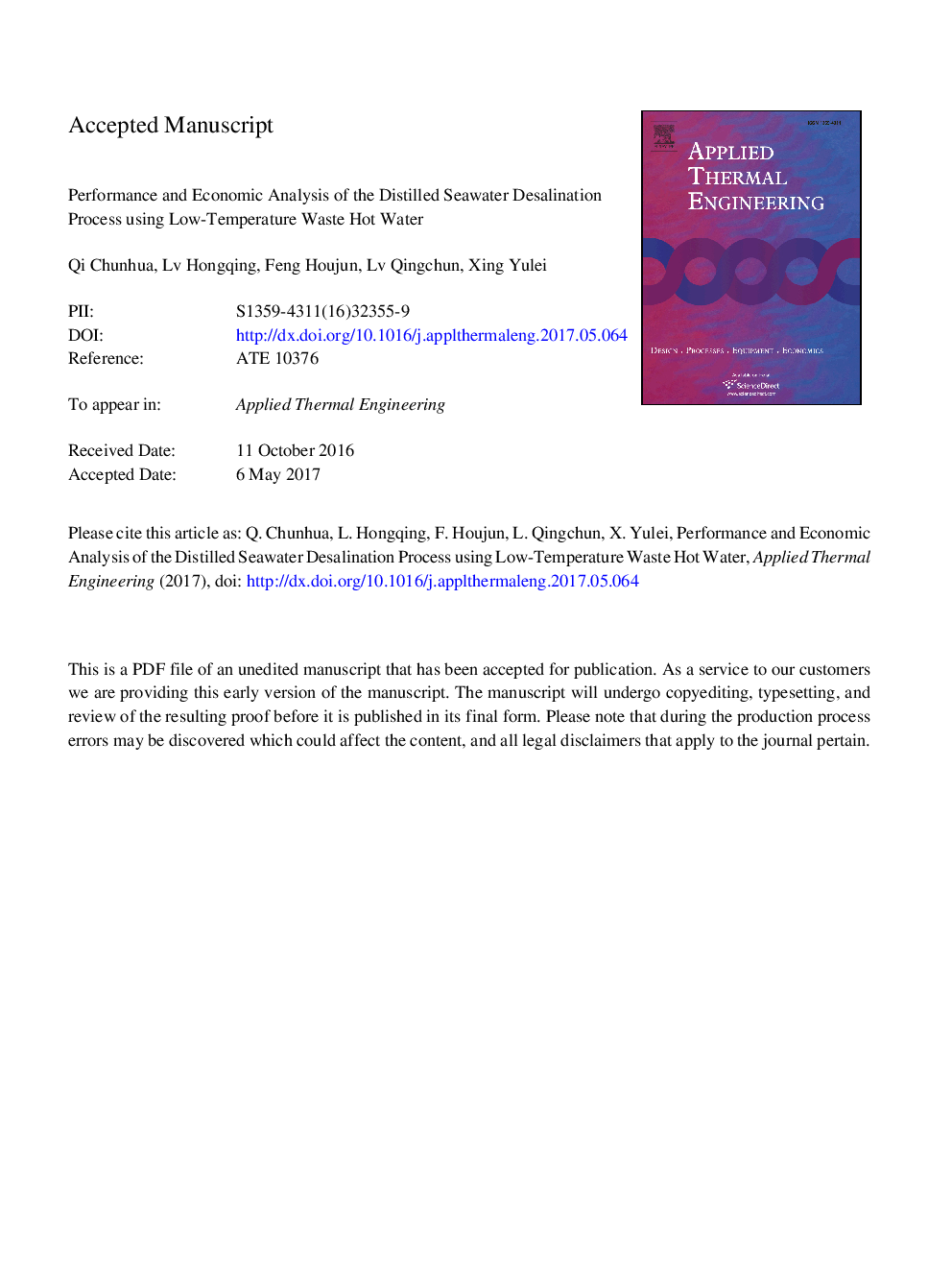| Article ID | Journal | Published Year | Pages | File Type |
|---|---|---|---|---|
| 4990962 | Applied Thermal Engineering | 2017 | 30 Pages |
Abstract
In this paper two waste-heat-driven MED desalination processes (HW-MED and Boost-HW-MED) using waste hot water from petrochemical industry were developed. The thermodynamic model of the two MED systems was established based on the energy and mass balance equations. Taking the typical production capacity of 10,000 m3/d as example the gained output ratio and total heat transfer area were selected as property indexes to compare the systemic performance of the two desalination processes based on the model calculation data. The effect of inlet temperature, outlet temperature and flow rate on the system performance were emphatically studied. Results showed that every 1 °C increment in feed water temperature would increase the output of freshwater by approximately 438 m3/d, and every 1 °C increase in return water temperature would decrease the output by 417 m3/d. Finally as the first recommendation, the investment and water-making cost of HW-MED process was investigated and compared with the common TVC-MED system. The operating cost of HW-MED system is only 2.354 RMB/m3, which is 39.5% lower than that of TVC-MED system motived by commodity steam. The financial evaluation and sensitivity analysis on the cost was carried out. The results show that HW-MED process has a strong ability to resist fluctuations of the freshwater production price, raw material prices and the total investment. The conclusion provides data reference and theoretical support for desalinating seawater using waste heat from low-grade energy sources.
Related Topics
Physical Sciences and Engineering
Chemical Engineering
Fluid Flow and Transfer Processes
Authors
Qi Chunhua, Lv Hongqing, Feng Houjun, Lv Qingchun, Xing Yulei,
